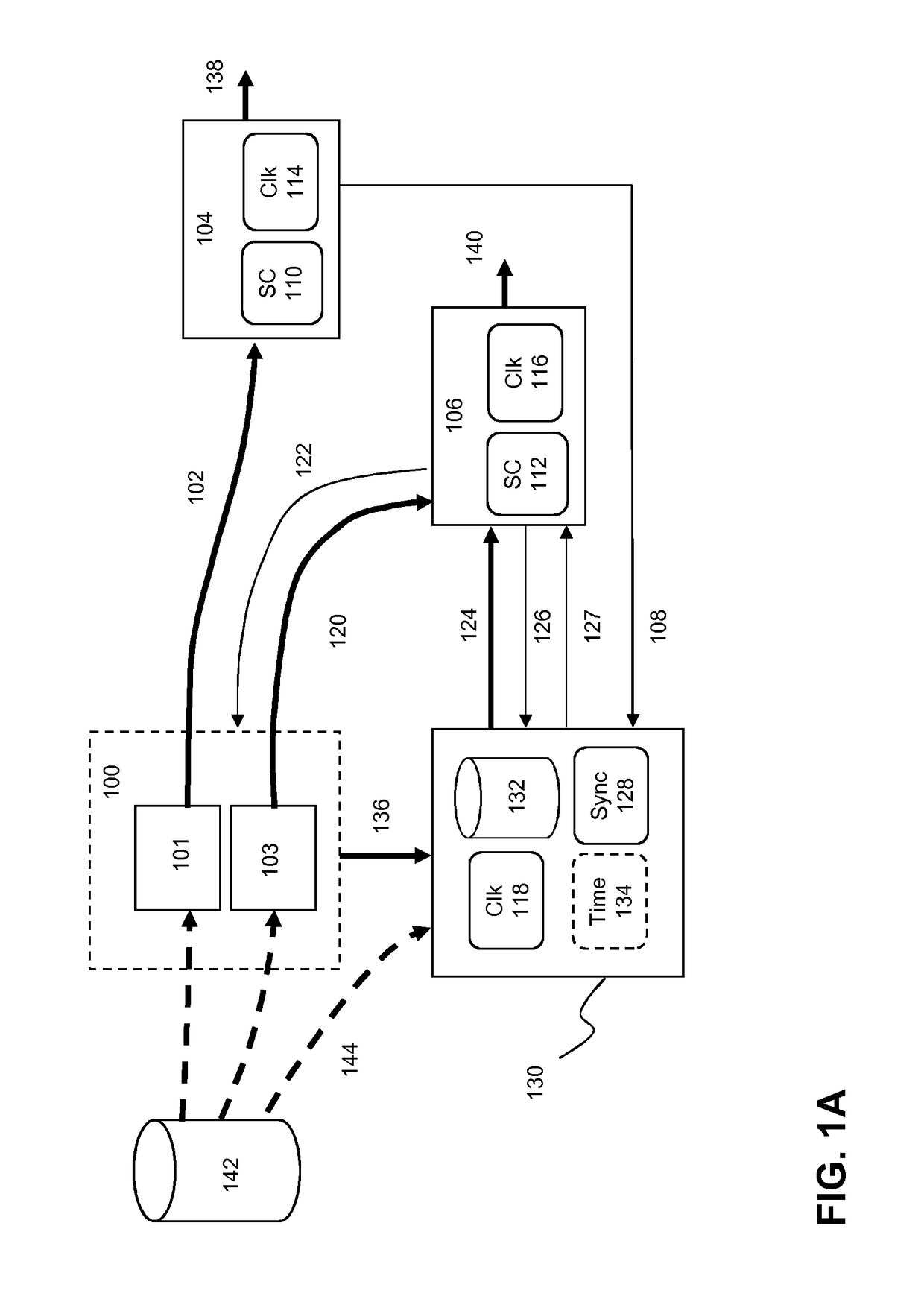Synchronized data processing of broadcast streams between receivers, including synchronized data processing between a receiver that is in the process of processing a stream and a receiver that wants to join the stream
a technology of synchronized data and broadcast streams, applied in the field of synchronizing data processing, can solve the problems of serious degrading user experience, inability to adjust the transmission of media streams, and further problems, and achieve the effect of reducing the maximum synchronization delay, reducing the theoretical delay, and increasing the
- Summary
- Abstract
- Description
- Claims
- Application Information
AI Technical Summary
Benefits of technology
Problems solved by technology
Method used
Image
Examples
Embodiment Construction
[0064]For the purpose of this invention the term receiver refers to a computer arranged for receiving a digitalized data stream. Examples of a receiver are home gateways, mobile terminals such as smartphones, television sets, tablets, laptops, set top boxes, wearables (e.g. Google Glass) and so on. The term client device generally refers to a module comprising the functionality for executing one or more parts of the method according to one or more embodiments of the invention. The module is suitable for use in a receiver (system). As such, and when independently claimed, the client device relates to a hardware component for use in a receiver, or to the receiver itself. Examples of such a hardware component may be a System on a Chip (SoC), a Radio Card, a Printed Circuit Board, or an Integrated Circuit. Likewise the functions and capabilities of the client device may also be implemented on a receiver as software or a combination of software and hardware components. The terms client a...
PUM
 Login to View More
Login to View More Abstract
Description
Claims
Application Information
 Login to View More
Login to View More - R&D
- Intellectual Property
- Life Sciences
- Materials
- Tech Scout
- Unparalleled Data Quality
- Higher Quality Content
- 60% Fewer Hallucinations
Browse by: Latest US Patents, China's latest patents, Technical Efficacy Thesaurus, Application Domain, Technology Topic, Popular Technical Reports.
© 2025 PatSnap. All rights reserved.Legal|Privacy policy|Modern Slavery Act Transparency Statement|Sitemap|About US| Contact US: help@patsnap.com



